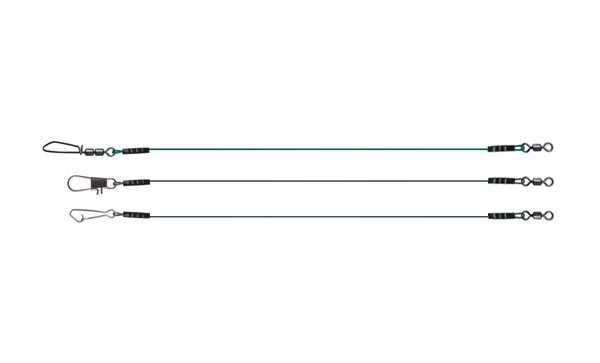

The characteristics of the rock fishing rod: < […]
The characteristics of the rock fishing rod:
<<Pole species>>
Divided into outer wear pole and middle pass pole. The “outer-piercing rod” is guided by the “wire loops” on the outside of the rod body one by one. The rod is thinner first, and the angler can give full play to the exquisite line control technique, and the contact area between the bus bar and the fishing rod is small and there is less friction. The effect of laying-off and throwing is good, but the wire loop protruding from the pole body is easy to hang on the bus. The TOP head (the outermost pole of the pole) is easy to wrap the tail, and it is easy to break if the wire is taken up or combined without attention. First, you need to use the "line washing" action to confirm, and the manufacturer also switched to the "oblique bead" (an improvement of the wire loop) that is less prone to tangling. The “Zhongtong Rod” is guided through the inside of the fishing rod rod tube. The rod is thicker at first, and the control line is less flexible. The friction between the busbar and the entire rod wall makes the exit line less smooth, and it becomes more serious when seawater enters the rod wall. However, it is less able to wrap the tail.
<<Number>>
The smaller the number, the thinner the pole is and the lighter the weight. It is suitable for smaller fish, slow currents, and fishing spots near the shore; the larger the number, the opposite is true. The numbers are 0, 0.8, 1, 1.25 (1.2), 1.5, 1.75(1.7), 2, 3, 4, 5, of which the number 1~2 is the most commonly used, and the number 1.5~2 is the most suitable for beginners.

<<Length>>
There are 4.5m, 4.8m, 5m, 5.3m, 6m, 6.3m, and 5.3m (18 feet) is the most commonly used. The longer the pole, the more difficult it is to control, but the length of the pole can slow down the impact of the fish, and it is convenient to hold the fish out when the fish rushes into the reef at the foot of the shore; the shorter the pole, the opposite is true.
<<Tonality>>
Load the rod first, and the fishing rod itself will have the most curved point. The more the front of the curved point, the more ‘first tune’, and vice versa. The ‘first tune’ is like 1/9 tune (the length of the fishing rod is divided into ten equal parts, the bending point is 1 before the 9), 2/8 tune, and the ‘carcass tune’ is like 4/6 and 5/5. Fishing rods that tend to be tuned first, the sharper the rod first, the better it can directly convey the fish information. The rod body is stiffer and easier to hold the fish out, and it will avoid drilling into the reef, but it has poor cushioning ability and is more likely to break or decouple. Longer length is more laborious; the opposite is true for tuned fishing rods.
Notice for purchasing rock fishing rods:
When you find the pole you want, pull out the pole section and fix it. Please be careful or the boss will feel distressed. If you are holding a high-end imported pole, be careful anyway, hold the handle and shake the pole up and down. , I feel that if the swing is not large (only a little bit in front), it means to tune first. If the swing is large, it is toned first. By the way, pay attention to whether there is any abnormal sound when shaking the pole. If it’s not good, change another one! If it’s OK, ask the clerk to help you grab the rod first, then lift the fishing rod up by yourself to see if the arc of the rod is normal, if there is a particularly bend or a particularly non-bend place , Please change to another one! Come again, carefully touch the paint on the rod body when putting the fishing rod away, to see if there are bubbles raised or recessed due to poor construction, finally, put on the rod cap to open the tail Check whether the wall of each pole section is close to a perfect circle and whether there is any unevenness in thickness. If these checks are all right, then congratulations on finding a good fishing rod.